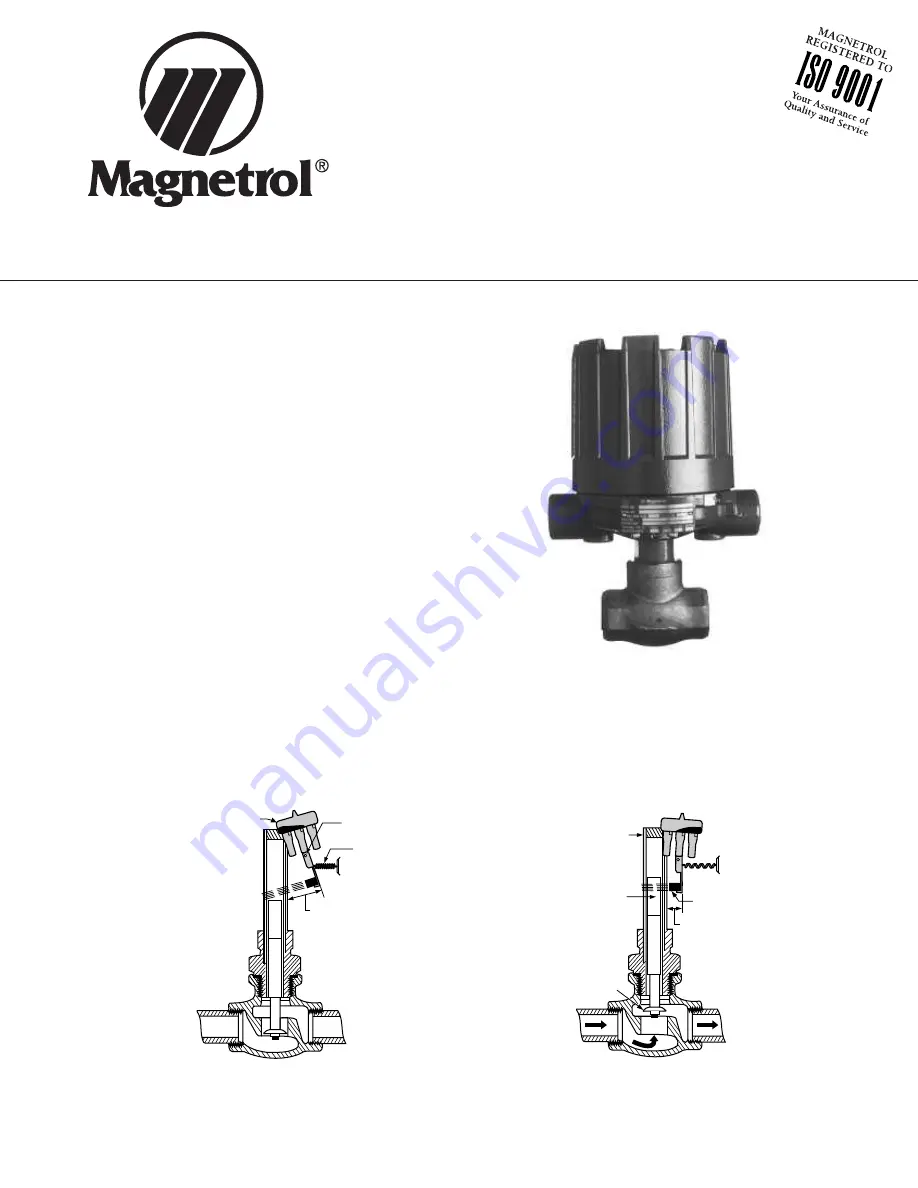
Description
F50 Flow Switches are utilized, in horizontal lines, to sense
the start or stop of liquid flow in oil, chemical, gas, and
water lines.
Principle of operation
The rate of flow through the valve body raises or lowers the
disc. This in turn raises or lowers the magnetic sleeve, with-
in its sealed non-magnetic enclosing tube. On an increasing
flow rate, the magnetic sleeve rises into the field of the per-
manent magnet, located outside the enclosing tube, actuat-
ing the attached switch mechanism. When the flow rate
drops, below the rate for which the flow disc is calibrated, a
reversal of this action occurs.
Operating cycle
On an increasing flow rate, the flow disc moves the attrac-
tion sleeve up within the field of a switch magnet, drawing it
in tightly to the enclosing tube. This causes the switch to
make or break an electrical circuit. When the flow rate
drops, below the rate for which the flow disc is calibrated,
the attraction sleeve is pulled downward until, at a predeter-
mined low flow rate, the switch magnet releases and swings
outward, away from the enclosing tube, causing a reversal
of the switching action.
Figure 1
Figure 2
5
6
4
Mercury switch
Swing out
position
Tension
spring
Pivot
No flow
position
5
6
4
Enclosing tube
(Non-magnetic)
Swing in
position
Sleeve
(magnetic)
Magnet
Flow disc
Position with
actuating flow
present
F50 Flow Switch
Instruction Manual and Parts List








